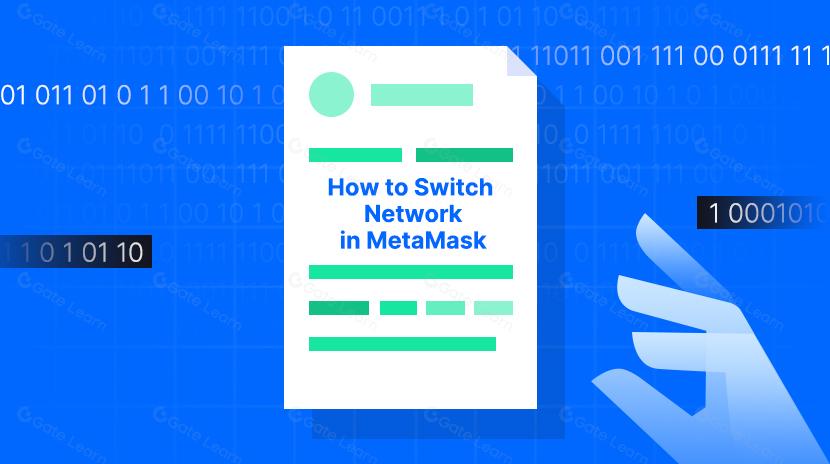Ikhtisar Pasar Strategi Hasil Stablecoin
Teruskan Judul Asli 'Panduan Pendapatan Stablecoin'
Pasar kripto baru-baru ini telah kurang menarik, dan pengembalian yang konservatif dan stabil sekali lagi menjadi permintaan pasar. Oleh karena itu, berdasarkan pengalaman investasi saya dalam beberapa tahun terakhir dan hasil penelitian yang terkonsentrasi pada ranah stablecoin pada akhir tahun lalu, saya ingin membahas topik klasik namun abadi tentang hasil stablecoin.
Kategori-kategori stablecoin saat ini di pasar kripto sebagian besar tergolong dalam kategori-kategori berikut:
- USDT: Secara bersyarat patuh tetapi dengan pangsa pasar tertinggi. Banyak digunakan dalam berbagai skenario (pasangan perdagangan kripto di bursa, gaji untuk perusahaan terkait kripto, perdagangan dunia nyata dan pembayaran offline). Pengguna bergantung pada skala Tether dan kemampuannya yang dirasakan untuk mendukung penebusan.
- Stablecoin yang dijamin oleh fiat dan sesuai 1:1. USDC didukung di sebagian besar rantai dan aplikasi, menjadikannya dollar yang benar-benar on-chain. Lainnya seperti PayPal USD dan USD BlackRock memiliki kasus penggunaan terbatas.
- Stablecoin berlebihan jaminan: Utamanya DAI dari MakerDAO, yang berkembang menjadi USDS di bawah Protokol Sky. LUSD dari Liquity juga merupakan pesaing, menawarkan pinjaman tanpa bunga dengan rasio jaminan 110% yang rendah sebagai inovasi kunci.
- Stablecoin yang didukung aset sintetis: Dalam siklus ini, USDe dari Ethena adalah contoh paling menonjol. Model yield-nya—arbitrase tingkat pendanaan—akan menjadi fokus utama nanti dalam artikel ini.
- Stablecoin yang didukung oleh Surat Utang U.S. melalui proyek RWA: USD0 dari Usual dan USDY dari Ondo adalah yang paling mencolok dalam siklus ini. USD0++ dari Usual secara inovatif menyediakan likuiditas untuk Surat Utang U.S., mirip dengan apa yang dilakukan Lido untuk penyetoran ETH.
- Stabilcoin algoritmik: Jalur ini sebagian besar dianggap tidak relevan setelah runtuhnya UST Terra. Luna tidak memiliki nilai intrinsik dan mengalami spiral kematian volatilitas dan penjualan besar-besaran. FRAX, yang menggabungkan model algoritmik dan model overkolateralisasi, masih digunakan dalam beberapa kasus, tetapi sebagian besar stabilcoin algoritmik kehilangan relevansi.
- Stablecoin non-USD: Stablecoin Euro (seperti EURC dari Circle dan EURT dari Tether) dan stablecoin berbasis fiat lainnya (BRZ, ZCHF, HKDR, dll.) saat ini memiliki sedikit dampak pada pasar yang didominasi USD. Satu-satunya jalur yang layak bagi mereka terletak pada sistem pembayaran yang diatur, bukan pada ekosistem kripto asli.

Peringkat kapitalisasi pasar stablecoin sumber: https://defillama.com/stablecoins
Saat ini, kategori utama penghasilan stablecoin meliputi yang berikut ini. Artikel ini akan menganalisis setiap jenis secara lebih detail:

Model Hasil Stablecoin
1. Peminjaman & Pinjaman Stablecoin:
Pemberian pinjaman adalah model hasil keuangan paling tradisional. Pengembalian pada dasarnya berasal dari bunga yang dibayar oleh peminjam. Pertimbangan penting meliputi keamanan platform atau protokol, risiko default peminjam, dan stabilitas pendapatan. Produk pinjaman saat ini termasuk:
- Platform CeFi: Produk tabungan fleksibel utama dari pertukaran top (Binance, Coinbase, OKX, Bybit).
- Protokol DeFi teratas: Aave, Sky Protocol (rebrand MakerDAO), Morpho Blue, dll.
Bursa dan protokol DeFi terkemuka ini terbukti aman melalui berbagai siklus pasar. Di pasar bullish, permintaan pinjaman melonjak dan imbal hasil tabungan fleksibel (misalnya, USDT, USDC) dapat melonjak di atas 20%. Di pasar sepi, imbal hasil biasanya turun menjadi sekitar 2-4%. Oleh karena itu, tingkat bunga pinjaman fleksibel adalah indikator langsung dari aktivitas pasar. Pinjaman bunga tetap, meskipun kurang likuid, sering kali menghasilkan imbal hasil lebih tinggi selama periode tenang, meskipun tidak bisa menangkap lonjakan selama masa pasar bullish.
Selain itu, ada beberapa inovasi mikro di pasar pinjaman stablecoin secara keseluruhan, termasuk:
- Protokol peminjaman DeFi dengan suku bunga tetap: Pendle adalah yang paling menonjol dalam siklus ini. Dimulai dengan peminjaman suku bunga tetap dan berkembang menjadi tokenisasi hasil. Proyek-proyek awal lainnya seperti Keuangan Notional dan Keuangan Elemen tidak berhasil namun memiliki konsep desain yang menarik.
- Model pembagian suku bunga dan subordinasi dalam pemberian pinjaman.
- Mekanisme peminjaman berleverage dalam DeFi.
- Platform pinjaman DeFi institusional, seperti Maple Finance, di mana sumber produk "Syrup"-nya dihasilkan dari pinjaman institusional.
- Pemberian pinjaman berbasis RWA, di mana hasil dari pinjaman dunia nyata dibawa ke rantai—misalnya, produk pembiayaan rantai pasok on-chain dari Huma Finance.
Singkatnya, pemberian pinjaman tetap menjadi model hasil yang paling langsung dan memerlukan modal yang besar di ruang stablecoin, dan kemungkinan akan terus mendominasi sebagai jalur utama untuk pengembalian.
2. Hasil Pertanian Hasil:
Diperankan oleh Curve, hasil pertanian hasil didapat dari biaya perdagangan AMM yang dibagikan kepada penyedia likuiditas (LP) dan hadiah token. Sebagai standar emas untuk platform DEX stablecoin, Curve memainkan peran penting - terdaftar dalam Curve Pools dianggap sebagai tolak ukur utama untuk adopsi stablecoin baru dalam industri. Keuntungan dari hasil pertanian Curve terletak pada keamanannya yang sangat tinggi, namun kekurangannya adalah hasil yang relatif rendah (0-2%), yang kurang menarik. Untuk dana yang lebih kecil atau jangka pendek, berpartisipasi dalam pertambangan likuiditas Curve mungkin bahkan tidak menghasilkan cukup untuk menutupi biaya gas transaksi.
Pasangan perdagangan stablecoin Uniswap menghadapi isu serupa. Untuk pasangan non-stablecoin di Uniswap, pertanian likuiditas dapat menimbulkan kerugian akibat kerugian sementara. Sementara itu, kolam stablecoin di platform DEX yang lebih kecil, meskipun menawarkan hasil yang lebih tinggi, membawa risiko penarikan karpet, yang melanggar sifat prudent dan stabil yang diperlukan untuk strategi keuangan berfokus pada stablecoin. Saat ini, kita melihat bahwa kolam stablecoin DeFi masih sangat bergantung pada model peminjaman. Bahkan 3Pool ikonik Curve (DAI, USDT, USDC) hanya menempati peringkat dalam 20 besar dalam hal TVL, menunjukkan bahwa pertanian hasil bukan pendekatan dominan untuk pengembalian stablecoin.

Peringkat TVL kolam Stablecoin sumber: https://defillama.com/yields?token=ALL_USD_STABLES
3. Pengembalian Arbitrase Netral Pasar:
Strategi arbitrase netral pasar telah banyak digunakan di lembaga perdagangan profesional dalam waktu yang lama. Dengan secara bersamaan memegang posisi long dan short, strategi ini bertujuan untuk mengurangi paparan pasar bersih menjadi hampir nol. Dalam konteks kripto, jenis utamanya termasuk:
- Arbitrase Tingkat Pendanaan: Kontrak berjangka abadi tidak memiliki tanggal jatuh tempo. Harganya tetap sejalan dengan harga spot melalui mekanisme tingkat pendanaan. Tingkat ini dibayarkan secara berkala dan menyempitkan selisih jangka pendek antara harga spot dan harga abadi.
- Ketika harga berjangka di atas spot (premium), longs membayar shorts, dan tingkat pendanaan positif.
- Ketika harga perpetual berada di bawah spot (diskon), posisi short membayar posisi long, dan tingkat pendanaan negatif.
- Data historis menunjukkan bahwa tingkat pendanaan positif terjadi lebih sering daripada yang negatif. Oleh karena itu, strategi tipikal adalah membeli spot dan melakukan short perpetuals, menghasilkan pendanaan positif yang dibayarkan oleh posisi long.

Statistik tingkat pendanaan historis Ethena menegaskan bahwa tingkat pendanaan positif mendominasi dari waktu ke waktu.
- Arbitrase Cash-and-Carry: Arbitrase ini memanfaatkan perbedaan harga antara pasar spot dan pasar berjangka. Pedagang melindungi posisi untuk mengunci keuntungan, berdasarkan basis—perbedaan antara harga berjangka dan spot. Strategi ini biasanya digunakan dalam pasar contango (harga berjangka > spot) atau backwardation (harga berjangka < spot). Lebih sesuai untuk modal besar, investor yang sabar, dan orang-orang yang yakin pada konvergensi basis, sering mencerminkan pola pikir keuangan tradisional.

- Arbitrase lintas pertukaran: Ini melibatkan eksploitasi perbedaan harga antara pertukaran yang berbeda dengan membangun posisi netral. Pada awalnya, ini adalah metode arbitrase utama di pasar kripto awal. Namun, kesenjangan harga untuk pasangan utama di sebagian besar pertukaran telah sebagian besar menghilang. Saat ini, strategi ini memerlukan bot otomatis dan lebih cocok untuk pasar yang fluktuatif atau token small-cap. Hambatan masuk bagi pengguna ritel tinggi—alat seperti Hummingbot sering digunakan.
- Bentuk-bentuk lain seperti arbitrase segitiga, arbitrase lintas-rantai, dan arbitrase lintas-kolam ada tetapi tidak akan diuraikan dalam artikel ini.
Strategi arbitrase netral pasar, karena profesionalismenya yang tinggi, sebagian besar hanya terbatas pada investor profesional. Namun, dalam siklus saat ini, Ethena telah membawa "Arbitrase Tingkat Pendanaan" on-chain, sehingga dapat diakses oleh pengguna ritel reguler.
Di Ethena, pengguna mendepositkan stETH ke dalam protokol dan menerima koin stabil USDe sebagai imbalannya. Secara bersamaan, protokol membuka posisi pendek setara di bursa terpusat, menghasilkan tingkat pendanaan positif. Menurut data historis, tingkat pendanaan positif lebih dari 80% dari waktu. Selama periode pendanaan negatif, Ethena menutupi kekurangan menggunakan dana cadangan. Protokol Ethena mengalokasikan 65% dari pendapatan protokol untuk melindungi tingkat pendanaan. Sisa 35% berasal dari staking Ethereum, pendapatan peminjaman on-chain dan CEX. Aset pengguna disimpan oleh penyedia OES (Off Exchange Settlement) pihak ketiga, dengan laporan audit bulanan, efektif mengisolasi risiko platform pertukaran.

Diagram Alur Protokol Ethena
Di luar risiko seperti kegagalan pertukaran terpusat, kecelakaan kustodian, kerentanan kontrak pintar, atau depegging aset jaminan — yang umumnya di luar kendali tim — risiko intinya terletak pada skenario tingkat pendanaan negatif yang berkepanjangan yang melebihi cakupan cadangan protokol. Berdasarkan data penarikan historis, skenario ini tampaknya tidak mungkin. Bahkan jika itu terjadi, itu akan menyiratkan bahwa model arbitrase tingkat pendanaan yang diadopsi secara luas di seluruh industri tidak lagi berlaku. Selama tim Ethena bertindak secara bertanggung jawab, protokol tidak mungkin mengalami "spiral kematian" seperti stablecoin algoritmik Terra. Sebaliknya, penurunan bertahap dalam hasil tinggi yang disubsidi token menuju pengembalian tingkat arbitrase yang lebih normal adalah skenario yang lebih mungkin.
Pada saat yang sama, layak diakui bahwa Ethena menawarkan transparansi yang luar biasa. Di situs resminya, pengguna dapat dengan jelas melihat hasil historis, tingkat pendanaan, posisi di seluruh bursa, dan laporan audit kustodian bulanan—tingkat pengungkapan yang melebihi produk arbitrase tingkat pendanaan serupa di pasaran.
Selain model arbitrase tingkat pendanaan Ethena, bursa Pionex juga menawarkan produk investasi stablecoin berbasis arbitrase berjangka. Sayangnya, selain Ethena, saat ini hanya sedikit produk arbitrase netral pasar dengan hambatan masuk rendah yang tersedia bagi investor ritel.
4. Proyek RWA Surat Utang Departemen Keuangan Amerika Serikat
Siklus kenaikan suku bunga Federal Reserve dari 2022 hingga 2023 mendorong tingkat suku bunga dolar AS di atas 5%. Meskipun kebijakan tersebut sejak itu beralih ke pemotongan suku bunga secara bertahap, yield di atas 4% pada aset yang dinyatakan dalam dolar masih mewakili keseimbangan langka antara keamanan tinggi dan pengembalian yang layak dalam keuangan tradisional. Bisnis RWA tunduk pada persyaratan kepatuhan yang tinggi dan intensif operasional. Di antara berbagai jenis aset, Surat Utang AS—sebagai instrumen standar yang tinggi likuiditas—adalah salah satu dari sedikit aset dasar yang layak untuk logika RWA yang baik.

Tren pertumbuhan U.S. Treasury RWA: Sumber data: https://app.rwa.xyz/kas negara
Ondo, yang menggunakan obligasi Departemen Keuangan AS sebagai aset dasarnya, menawarkan USDY untuk pengguna ritel umum non-AS dan OUSG untuk investor institusi AS yang memenuhi syarat, keduanya menghasilkan 4,25%. Ini memimpin sektor RWA dalam hal dukungan multi-rantai dan integrasi ekosistem, meskipun sedikit kurang dalam kepatuhan regulasi dibandingkan dengan FOBXX dari Franklin Templeton dan BUIDL dari BlackRock. Sementara itu, protokol Usual yang sedang berkembang telah mendapatkan daya tarik dalam siklus ini dengan membangun USD0 pada keranjang Surat Utang AS dan memperkenalkan USD0++, token likuid yang mirip dengan solusi staking Ethereum dari Lido, yang memberikan likuiditas pada Surat Utang terkunci 4 tahun dan memungkinkan pengguna untuk mendapatkan pengembalian tambahan melalui pertambangan likuiditas stablecoin atau kolam pinjaman.

Diagram hasil hasil Usual protocol's USD0 dan USD0++
Penting untuk dicatat bahwa sebagian besar proyek RWA Departemen Keuangan AS menawarkan hasil tetap sekitar 4%. Hasil yang lebih tinggi di kolam koin stabil Usual sebagian besar didorong oleh insentif spekulatif seperti subsidi token Usual, hadiah Pills (Point), dan bonus pertambangan likuiditas tidak dapat dipertahankan dalam jangka panjang. Sebagai proyek RWA dengan ekosistem DeFi yang paling terintegrasi, Usual masih menghadapi risiko hasil yang secara bertahap menurun, meskipun tidak sampai pada titik keruntuhan sistemik.
Meskipun awal 2025 menyaksikan peristiwa pelepasan dan penjualan yang dipicu oleh perubahan mekanisme penebusan USD0++, penyebab utamanya adalah ketidakcocokan antara sifat obligasi dan harapan pasar, yang diperparah oleh kesalahan dalam tata kelola. Namun, desain mekanisme likuiditas USD0++ tetap menjadi model inovatif yang layak ditiru untuk proyek-proyek RWA yang didukung oleh Departemen Keuangan AS lainnya.

5. Produk Terstruktur Berdasarkan Opsi
Saat ini, produk terstruktur dan strategi mata uang ganda yang populer di bursa terpusat utama sebagian besar berasal dari strategi perdagangan opsi, khususnya pendekatan 'menjual opsi untuk mendapatkan premi' - yaitu, Strategi Jual Put atau Jual Call. Untuk investasi stablecoin yang dikonversi ke USD, strategi Jual Put lebih umum. Pengembalian berasal dari mengumpulkan premi yang dibayarkan oleh pembeli opsi, artinya investor mendapatkan pendapatan stabil yang dikonversikan ke USDT atau mungkin memperoleh BTC atau ETH dengan harga target yang lebih rendah.
Dalam praktiknya, strategi penjualan opsi paling cocok untuk pasar sideways atau range-bound: harga strike Sell Put biasanya sejajar dengan ujung bawah kisaran harga, sementara Sell Call sejajar dengan ujung atas. Di pasar bullish, strategi Sell Put berisiko kehilangan peluang naik, membuat Buy Call lebih tepat. Di pasar beruang, strategi Sell Put dapat menyebabkan kerugian berkelanjutan, pada dasarnya "membeli terlalu dini" karena pasar terus jatuh. Untuk pemula, mudah jatuh ke dalam perangkap mengejar "pengembalian premi tinggi" jangka pendek sambil meremehkan eksposur terhadap penurunan harga yang signifikan. Namun, menetapkan strike price terlalu konservatif (terlalu rendah) dapat mengakibatkan premi yang tidak cukup menarik. Berdasarkan pengalaman perdagangan opsi penulis selama bertahun-tahun, waktu optimal untuk menggunakan strategi Jual Put adalah ketika ketakutan pasar tinggi, menetapkan target harga rendah untuk mendapatkan premi yang lebih tinggi, sementara di pasar bullish, suku bunga pinjaman fleksibel di bursa cenderung lebih menguntungkan.

Baru-baru ini populer di bursa seperti OKX, strategi perlindungan utama Shark Fin menggabungkan Bear Call Spread (menjual Call untuk mendapatkan premi + membeli Call dengan strike lebih tinggi untuk membatasi keuntungan) dan Bull Put Spread (menjual Put untuk mendapatkan premi + membeli Put dengan strike lebih rendah untuk membatasi kerugian). Penyiapan opsi terstruktur ini memungkinkan investor untuk mendapatkan premi dalam kisaran harga yang ditentukan, sementara kerugian dan keuntungan di luar kisaran tersebut dilindungi satu sama lain, menghasilkan tidak ada keuntungan atau kerugian tambahan. Ini adalah strategi investasi berbasis USDT yang sesuai untuk pengguna yang memprioritaskan pelestarian modal daripada memaksimalkan pendapatan premi atau pengembalian yang didenominasi crypto.

Diagram produk terstruktur Shark Fin OKX
Infrastruktur opsi on-chain masih dalam pengembangan awal. Pada siklus sebelumnya, Ribbon Finance adalah protokol lemari opsi terkemuka. Platform lain seperti Opyn dan Lyra Finance juga memungkinkan eksekusi manual dari strategi penghasilan premium, tetapi popularitas mereka memudar dalam siklus saat ini.
6. Tokenisasi Yield
Sebagai proyek unggulan dalam siklus ini, Protokol Pendle dimulai dengan pinjaman suku bunga tetap pada tahun 2020 dan berkembang menjadi tokenisasi imbal hasil lengkap pada tahun 2024. Ini memungkinkan pengguna untuk membagi aset yang menghasilkan imbal hasil menjadi komponen-komponen yang berbeda, memungkinkan mereka untuk mengunci imbal hasil tetap, berspekulasi tentang imbal hasil masa depan, atau melindungi diri dari volatilitas imbal hasil.
- Token hasil yang terstandarisasi (SY) dapat dibagi menjadi:
- PT (Token Utama): Mewakili prinsipal dari aset yang mendasarinya dan dapat ditukarkan 1:1 saat jatuh tempo.
- YT (Yield Token): Mewakili bagian hasil masa depan, yang menurun seiring waktu dan menjadi tak berharga saat jatuh tempo.
Pendle mendukung beberapa strategi perdagangan:
- Pendapatan Tetap: Menahan PT hingga jatuh tempo untuk mengamankan pengembalian tetap, cocok untuk investor yang menghindari risiko.
- Spesulasi Hasil: Membeli YT untuk bertaruh pada kenaikan hasil masa depan, ideal untuk pengguna yang toleran terhadap risiko.
- Lindung Nilai Risiko: Menjual YT untuk mengunci hasil saat ini dan melindungi diri dari penurunan pasar.
- Penyediaan Likuiditas: Pengguna dapat menyediakan PT dan YT ke dalam kolam likuiditas untuk mendapatkan biaya perdagangan dan imbalan token PENDLE.
Pool stablecoin Pendle saat ini menawarkan hasil keseluruhan yang menarik dengan menggabungkan hasil aset dasar dengan keuntungan YT spekulatif, biaya LP, insentif token Pendle, dan imbalan berbasis poin. Salah satu kelemahannya, namun, adalah bahwa sebagian besar pool berpenghasilan tinggi bersifat jangka pendek hingga menengah, memerlukan tindakan on-chain yang sering untuk memutar posisi, berbeda dengan protokol staking atau pinjaman yang lebih "atur dan lupakan".
7. Produk Yield Stablecoin Gaya Keranjang
Ether.Fi, sebuah protokol terkemuka dalam ruang liquid restaking, dengan proaktif merangkul transformasi produk ketika sektor restaking memasuki fase jenuh dan downtrend. Sejak itu, telah berkembang menjadi beragam produk penghasil yield yang melibatkan BTC, ETH, dan stablecoin, menjaga posisi kepemimpinannya di seluruh ekosistem DeFi.
Dalam kolam renminbi netral pasarnya, Ether.Fi menawarkan kepada pengguna keranjang strategi hasil koin stabil melalui format dana yang dikelola secara aktif. Ini termasuk pendapatan pinjaman (Syrup, Morpho, Aave), pertambangan likuiditas (Curve), arbitrase tingkat pendanaan (Ethena), dan tokenisasi hasil (Pendle). Struktur yang terdiversifikasi ini adalah cara yang efektif untuk mendapatkan hasil tinggi sambil memitigasi risiko, terutama bagi pengguna yang mencari pendapatan on-chain yang stabil, mengelola modal lebih kecil, dan lebih memilih opsi investasi yang memerlukan pemeliharaan rendah.

Ether.Fi Market-Neutral K USD Asset Allocation

Perjanjian Partisipasi Ether.Fi Pasar-Netral USD
8. Hasil Staking Koin Stabil
Sementara stablecoin seperti DAI kurang memiliki sifat staking yang melekat pada token PoS seperti ETH, jaringan AO, yang diluncurkan oleh tim Arweave, memperkenalkan model inovatif. Ini mendukung staking on-chain dari stETH dan DAI sebagai bagian dari distribusi token Fair Launch-nya. Di antaranya, staking DAI menawarkan efisiensi modal tertinggi untuk mendapatkan imbalan token AO. Model ini mewakili bentuk alternatif dari yield stablecoin, memungkinkan pengguna untuk mendapatkan imbalan token AO di atas aset DAI yang aman—strategi berisiko tinggi, berpotensi tinggi. Risiko utamanya terletak pada ketidakpastian pengembangan jaringan AO dan volatilitas harga tokennya.

Sebagai kesimpulan, artikel ini merangkum model hasil stablecoin utama yang saat ini tersedia di pasar kripto. Meskipun stablecoin termasuk aset yang paling dikenal bagi peserta kripto, mereka sering diabaikan dalam strategi portofolio. Pemahaman yang jelas tentang mekanisme hasil mereka dan alokasi yang tepat dapat membantu membangun dasar keuangan yang kokoh, memungkinkan peserta pasar untuk lebih baik menavigasi ketidakpastian lanskap kripto.
Penyangkalan:
Artikel ini diperbanyak dari [ JacobZhaoMeneruskan Judul Asli 'Panduan Pendapatan Stablecoin'. Hak cipta milik penulis asli [.JacobZhao], jika Anda memiliki keberatan terhadap pengutipan ulang, harap hubungi Gate Belajartim, dan tim akan menanganinya sesegera mungkin sesuai dengan prosedur yang relevan.
Penafian: Pandangan dan pendapat yang terdapat dalam artikel ini hanya mewakili pandangan pribadi penulis dan tidak merupakan saran investasi apa pun.
Versi bahasa lain dari artikel diterjemahkan oleh tim Gate Learn dan tidak disebutkan dalam Gate.com, artikel yang diterjemahkan mungkin tidak boleh direproduksi, didistribusikan, atau diplagiat.
Artikel Terkait

Analisis Teknis adalah apa?

Apa itu Tronscan dan Bagaimana Anda Dapat Menggunakannya pada Tahun 2025?

Top 20 Airdrop Kripto pada 2025

Apa itu Stablecoin?

Risiko yang Harus Anda Waspadai Saat Berdagang Kripto


